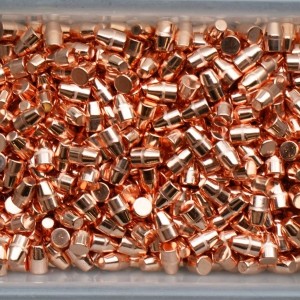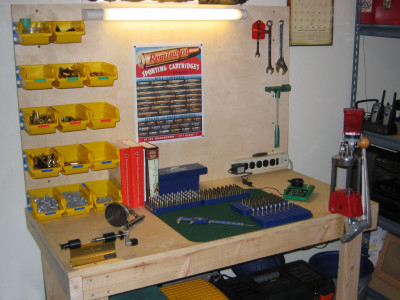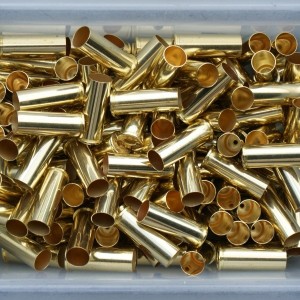Getting started with Reloading Bullets
2021 is off to a crazy start, and you may have ended up on this website because you are getting tired of the recent ammo shortages and want to take your life back into your own hands. Ammo shortage or not, learning to reload is a great way to gain independence from national supply/demand issues and protect yourself from the uncertainty of public policy.
 Reloading bullets is a rewarding a hobby and a big step towards ammo independence. Learning the art of reloading opens the doors to numerous ammo options. You can make your rounds as light or hard hitting as you please. Pair up your rounds with any types of bullet tips you choose…or even cast your own.
Reloading bullets is a rewarding a hobby and a big step towards ammo independence. Learning the art of reloading opens the doors to numerous ammo options. You can make your rounds as light or hard hitting as you please. Pair up your rounds with any types of bullet tips you choose…or even cast your own.
Part of reloading is having the right tools. The biggest expense in reloading is the initial cost. This cost is the reloader. Luckily, this is a one time purchase that you’ll have for many many years. Over a short period of time, you will recoup this cost, as you spend more time reloading ammo and less money buying it. Below I have outlined some of the time reloading presses.
| Reloading Press and Product Link | ||||
|---|---|---|---|---|
| Reloader Type | Progressive press | Single Stage | Single Stage | Single Stage |
| Warranty | Lifetime | Lifetime | 1 year | Lifetime |
| Reviews | Our Review! | Our Review! | Our Review! | More Reviews on Amazon |
Now that I’ve already covered what you’ll need, ill cover more in depth how to use these tools. When reloading bullets; especially when you are learning how to reload bullets, there are a few basic steps to follow.
Instructions
 Starting off, you will need a quiet spacious work space. Concentrating and attention to detail is a very important to avoid expensive mistakes. You’ll need a sturdy table to mount your press and to organize your equipment.. An updated load reference is needed as to not exceed powder charges. I will refer to this as the load manual.After this initial setup you are ready to start. I will now walk you though reloading as if I am doing it myself right now.
Starting off, you will need a quiet spacious work space. Concentrating and attention to detail is a very important to avoid expensive mistakes. You’ll need a sturdy table to mount your press and to organize your equipment.. An updated load reference is needed as to not exceed powder charges. I will refer to this as the load manual.After this initial setup you are ready to start. I will now walk you though reloading as if I am doing it myself right now.
I will assume we are reloading 38 special. It’s a common and easy round to reload. If you are not using new brass or casings as we call it, range brass or once shot brass will have to be processed. Cleaned, debured, sized, deprimed and trim to a proper length. New brass will be ready to accept powder, primer and a bullet
 Clean brass is of utmost importance. You can clean them with a tumbler filled with your media of choice. Inspect each casing for damage, at the same time debur the neck. Lightly rotate the deburing tool inside and out of the neck of the casing. Recycle the damaged ones at your recycle center. Insert the proper shell holder and sizing die. If you are using a carbide sizing die no lubrication is needed (Check your die box or instructions if you’re not sure). If not roll the casings lightly across the lube pad and insert into the shell holder. Run the press once and return and you are now resized. Next, measure the length with a caliper and compare to the load manual. Trim the casing to the proper length with the case trimmer.
Clean brass is of utmost importance. You can clean them with a tumbler filled with your media of choice. Inspect each casing for damage, at the same time debur the neck. Lightly rotate the deburing tool inside and out of the neck of the casing. Recycle the damaged ones at your recycle center. Insert the proper shell holder and sizing die. If you are using a carbide sizing die no lubrication is needed (Check your die box or instructions if you’re not sure). If not roll the casings lightly across the lube pad and insert into the shell holder. Run the press once and return and you are now resized. Next, measure the length with a caliper and compare to the load manual. Trim the casing to the proper length with the case trimmer.
Resized brass casings are now ready to be deprimed. At the same time, most depriming dies also expand the neck or bell it out as to insert the bullet. You only want a slight bell. Too much deformation will cause the casing to split. The bell only has to be large enough to allow the new bullet to be seated atop the brass casing. Make slow incremental adjustments until you obtain the right size bell.
Set up the priming mechanism. Range brass will need clean primer pocket. Do this with a primer pocket tool, a couple of rotations and its done. Inspect the flash hole for any obstructions. Sometimes media will lodge in the flash hole. Poke a small wire or tooth pick to remove. Refer to the load manual for the proper primer. Insert your brass into the shell holder. Press firmly to seat the primer in the pocket. Run your finger across the bottom of the casing. A properly seated primer should be flush or deeper that the bottom rim.
Look in the load manual for 38 special. Find the weight of your bullet in lead or jacketed that you will be using. Next look under the type of powder you are using and cross reference the two. You will notice powder charge listed in grains. The different grains will tell you how fast the bullet will travel in FPS (feet per second). Lead bullets will lead up your barrel if you push it too fast. For target practice I recommend a medium charge. Use a powder measure to obtain the charge you want, check it with a scale or weight each charge. Pour the powder into each primed casing.
Before seating each bullet, look at the tray of charged casings. The powder level should all be the same. At the same time you are looking for missed or double charged casings. If this is done, just redo that charge. Now you are ready to seat the bullet. Install the bullet seating die. Set the bullet into the bell of the casing and slowly seat the bullet a little. Measure the total length and refer to the load manual for maximum bullet length. Make slow adjustment until the desired length is obtained.
Right now you should be feeling a great sense of gratification, but we’re not done yet! When you are done, it is time to inspect the final product. Makes sure each round is cleaned off and free from any debris. Check for burs, fully seated bullets, fully pressed-in primers, and periodically check for overall bullet length.